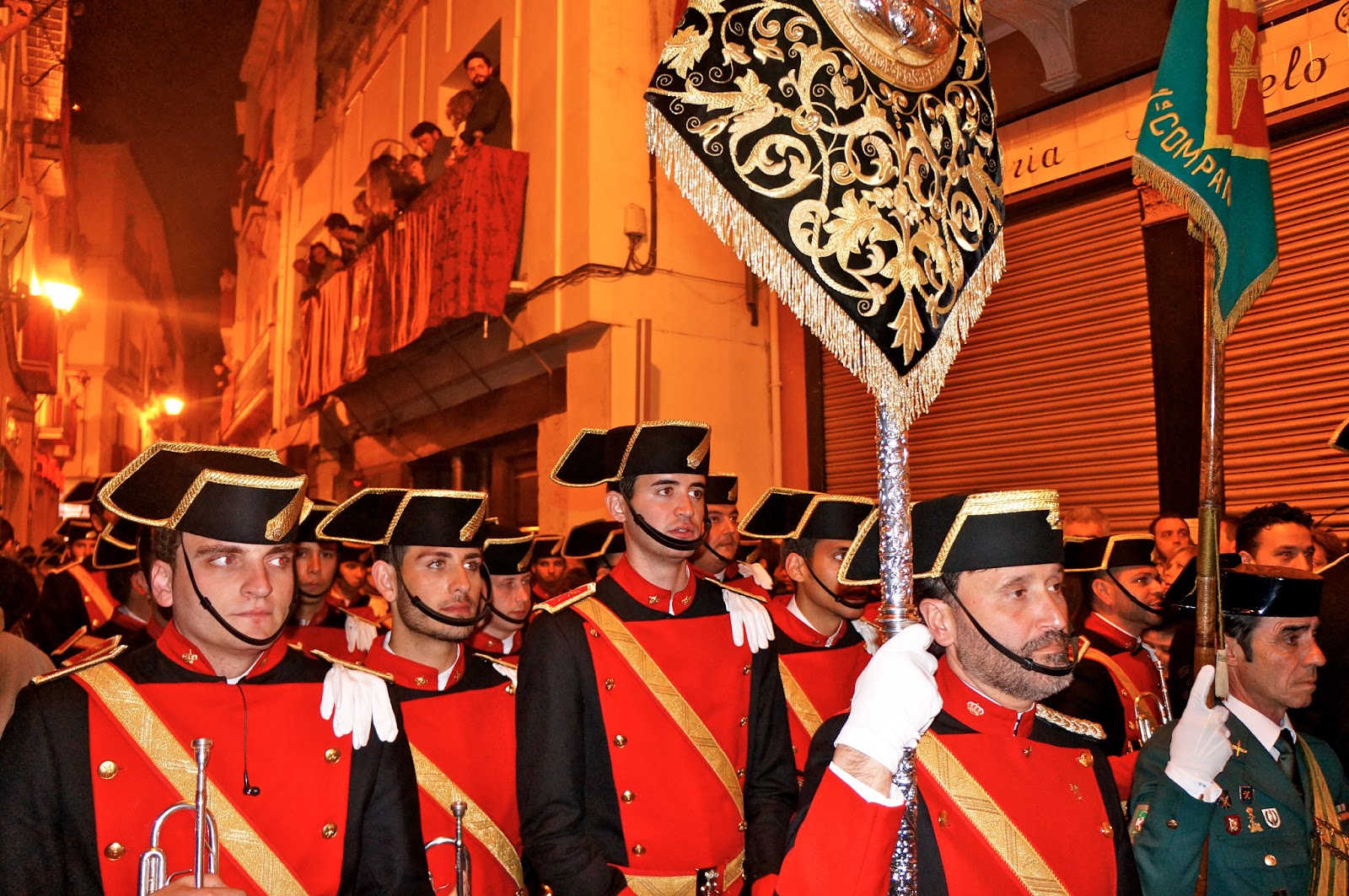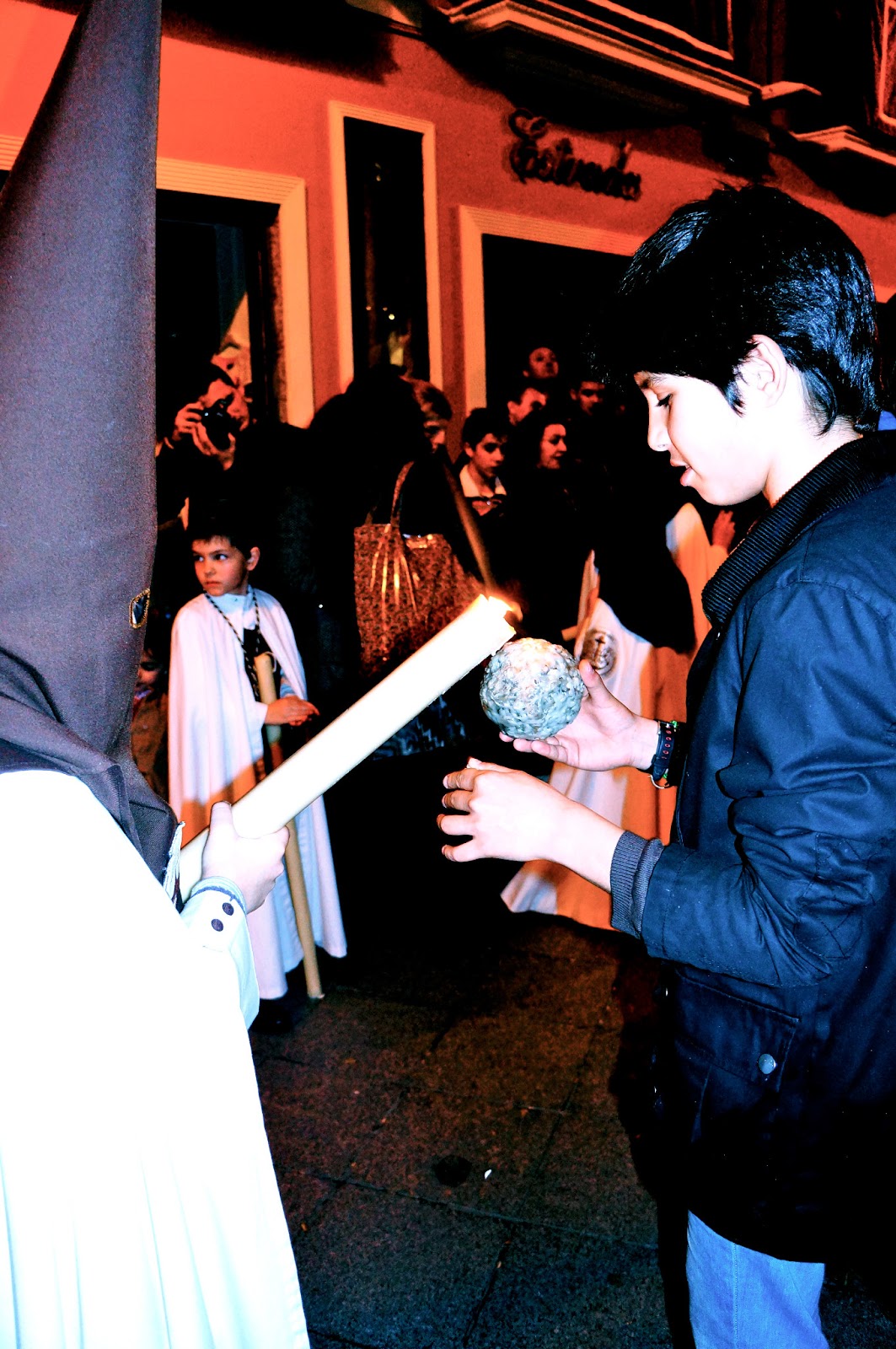Seville: a city that will always have a special place in my heart. I was fortunate to be able to see the capital of Andalusia during Semana Santa (Holy Week) when the whole city was out on the streets celebrating. Thinking about it now, there was one point during my stay when I questioned if I had made the right decision by visiting SpainҀs fourth largest city on the busiest week of the year. But that was only because I got stuck for two hours circling my hostel through narrow, windy streets, many of which were blocked by people eagerly watching the various processions that were passing by.
I arrived in the city on Thrifty Thursday. That night I witnessed my first procession. I wandered through the congested streets until I found an unoccupied spot up against a grey stone wall. Around me were families of three to four generations that were waiting for the processions of Los Negritos (The BlackҀs) brotherhood to pass en route to SevilleҀs Cathedral from their local church. Elders, adults and teens were all participating in botell n, essentially drinking in the street, which is allowed only on holidays. Children were having their own fun running around and playing with balls they made out of wax that they had collected from the candles of previous processions. The boy next to me proudly told me that he had been collecting the drippings for his wax-ball for years; I could tell by its large volume (it was about the size of his baby brotherҀs head).
I instantly knew when the procession had turned the corner nearest to me because the many loud Spanish voices quickly turned into loud hushes. La Cruz de Gu퀀a (guiding cross) lead the procession through its fixed path. Following the cross were the nazarenos, members of the brotherhood marching in silence, without shoes, wearing solid colored capirotes (pointed hoods), holding long, lit, wax candles. Alter boys dressed in vestments and dalmatics, traditional Christian garments, preceded next with chandeliers and incense that perfumed the street. For me, the scent of the incense immediately brought back childhood memories of Catholic mass.
The National Police walked in front of El Paso, a float with intricate, lifelike wooden sculptures that depicted a scene of the Passion and the Virgin Mary mourning her sonҀs crucifixion. The floats were decorated with fabric, candles, and flowers and were lifted, moved, and lowered on the shoulders and necks of a team of strong men called costaleros. The men are all inside the structure of the float, disguised by a curtain, creating the illusion that the float is moving by itself.
As the first paso was about to reach me, I realized the need for the police. The paso took up almost the entire width of the thin street. Men in their uniforms herded people like sheep down the street to make enough room for the float to get through with ease. Luckily, the part of the street that I was standing on left no room for anyone to get behind or in front of me. As the paso slowly passed I pushed against the wall and sucked in my belly. There was barely an inch of space between the oversized representation of Christ and myself.
I was raised Catholic but I donҀt consider myself to be a religious person nor do I believe that touching something will bring me good fortune (the way that many Catholics feel about the floats). But, when the gold plated pasowas inches in front of my face and I could see the antiques beauty, my inner child wanted to touch it and believe, if for just a moment, that it was a tangible representation of something much larger than myself. So I did.
Here are some pictures I took of the procession:
 |
| They were trying to get a better view of the procession |
Outside the Cathedral
-Ana Caicedo















No comments:
Post a Comment